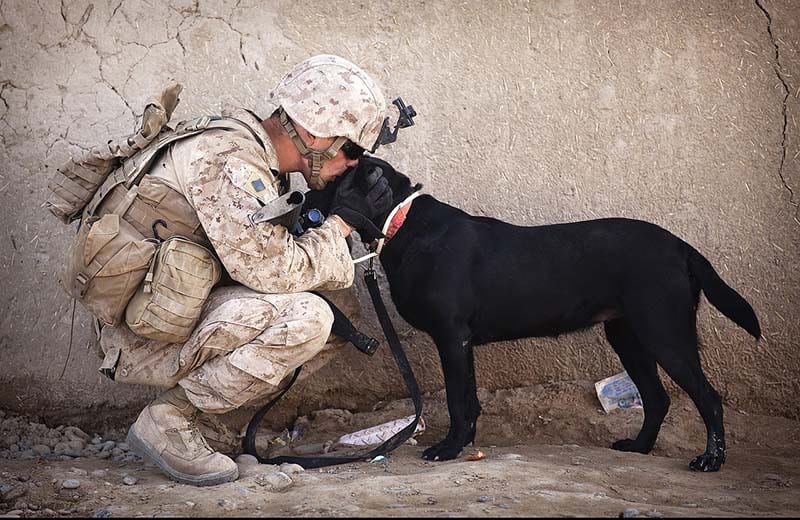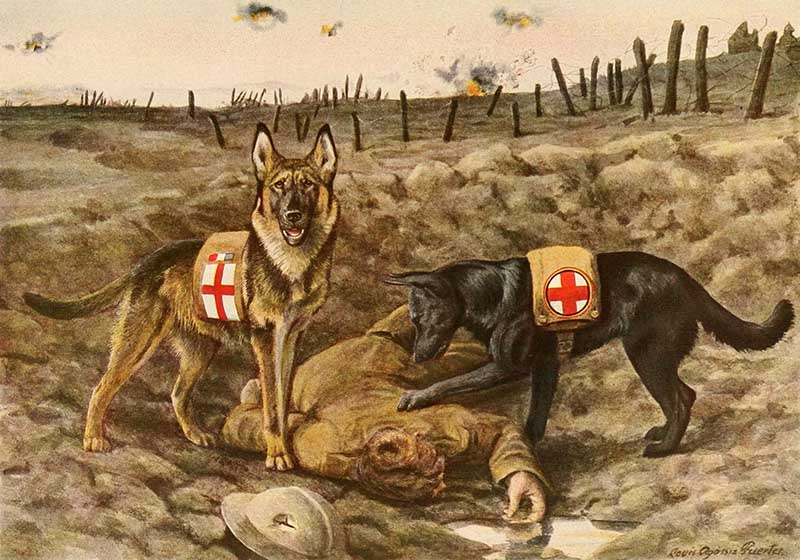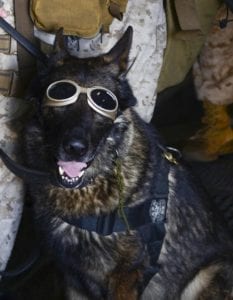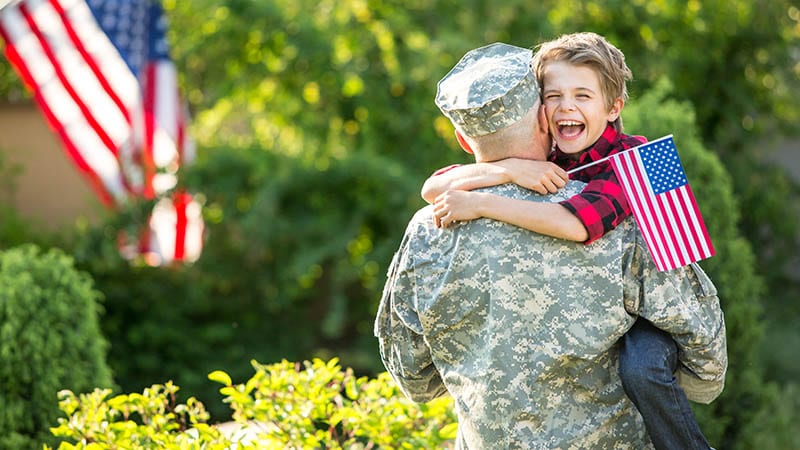MILITARY SERVICE DOGS
Quick Links
- Different Types of Service Dogs
- What Makes a Great Service Dog
- What Duties Have Service Dogs Performed Over the Years
- Patrol Dogs / Scout Dogs
- Sentry Service Dogs
- Tunnel Service Dogs
- Mine Detection Dogs
- Messenger Dogs
- Casualty Service Dogs
- Explosives Detection Dogs
- Single-purpose Service Dogs
- Specialized Search Dogs (SSD)
- Explosive Detection Dogs (EDD)
- Combat Tracker Dogs (CTD)
- Narcotics Detection Dogs (NDD)
- Dual-Purpose Service Dogs
- Patrol Narcotics Detector Dog (PNDD)
- Patrol Explosive Detector Dog (PEDD)
- Multi-purpose Dogs (MPD/MPC)
- What Happens to Military Service Dogs When They Retire?
- Service Dogs and PTSD
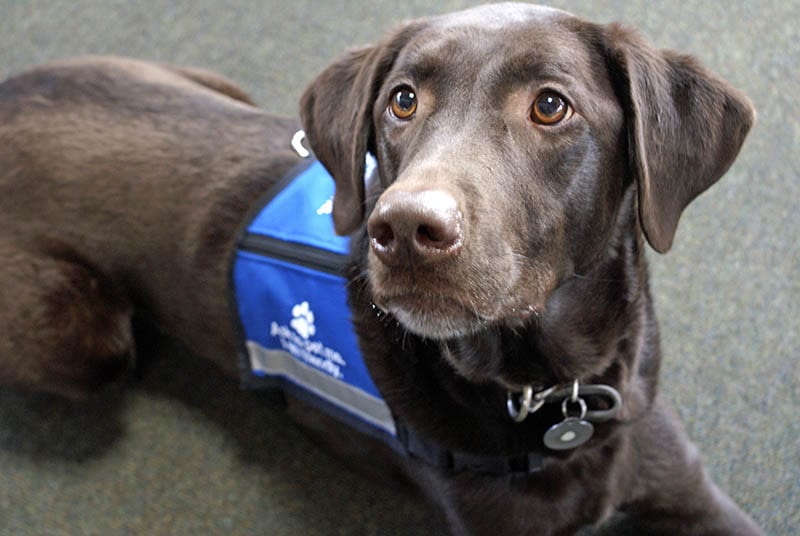
Service dogs have been working alongside our defenders throughout history in almost every significant combat. However, it was only during WWII that they were officially recognized. They have been trained in tracking, drug and bomb detection, weapons, and how to attack enemies.
Different Types of Service Dogs
Service dogs have a specific skill set that could almost be classed as superhuman, they can intimidate and subdue without using a lethal force, and in lots of cases, they can reach places that are otherwise impossible for people to reach, in a far quicker time. On top of this, their sensory capacity is immense; and for these reasons, they are the ideal companion for modern armies and military personnel.
Looking back to World War II, when service dogs where being trained for the K9-Corps, there were roughly thirty different breeds of dog that were used. Over time, as their skills were defined, there were just five breeds that were kept on. These were Doberman Pinschers, Belgian Sheep Dogs, Giant Schnauzers, Farm Collies, and German Shepherds. Aside from these breeds, Huskies and Malamutes were retained for Arctic duties.
Most of the service dogs used in the U.S military are Belgian Malinois, Dutch, and German Shepherds. All of these breeds are loyal, easily trained, intelligent, aggressive, and athletic. German Shepherds are the favored service dog above all the other breeds, due to the number of traits they have along with their ability to easily adapt to a range of climates.
The only other notable breed of a service dog that must be singled out are Retrievers. Because of their immense detection abilities, they are prime for odor detection tasks.
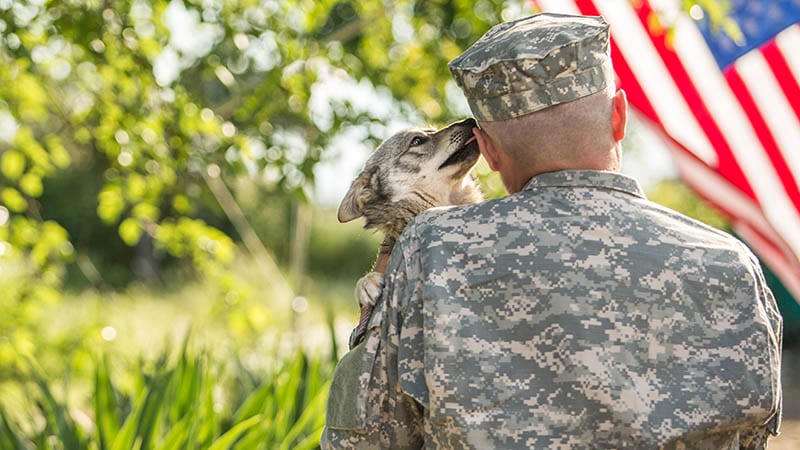
What Makes a Great Service Dog
It goes without saying that a service dog’s sense of smell is far greater than any human. The olfactory element of their brain, which is the section that is devoted to their sense of smell is far greater than that of a human, and they have a greater number of nose receptors too. These attributes mean that a service dog is able to pick up on the slightest of odors, they can even sense the innate differences in various chemical compositions.
What Duties Have Service Dogs Performed Over the Years
Looking back, service dogs in the military have performed a whole range of roles over the years. In the past, they were treated like bait, to help draw out enemies from their hiding places. However, in recent times, their intended duties and roles have been more defined, and more in tune with their specialist skills.
Patrol Dogs / Scout Dogs
Patrol or Scout dog duties involve working to help with the detection of snipers along and assist with ambushes. These service dogs need to be highly intelligent and have a very quiet disposition that enables them to work silently. They will typically work on the front line of an infantry patrol or walk point with combat patrols.
These service dogs can sense an enemy’s presence from as far as 1000 yards away, a distance which is far greater than any human could do. When they pick up on enemies nearby, they will typically hold their tails rigidly straight, prick up their ears and raise their hackles with a stiffened body. A patrol with a service dog was far less likely to be ambushed.
Sentry Service Dogs
Typically, Sentry dogs were trained to warn people by barking or growling. They were particularly good at working at night or during dark conditions or when an attack from behind was likely. Sentry service dogs were also training to accompany patrol guards and to want them of approaching danger.
They are also used to guarding important areas or equipment, such as an airport, war plants, supply dumps, vehicles and more. In terms of working with military personnel, their ability to detect intruders has been an essential function. Almost 90% of the service dogs used in World War II were sentry dogs.
Tunnel Service Dogs
Tunnel dogs were invaluable in Vietnam. They were primarily used for exploration purposes and in order to detect any tunnels which may have been exploited by the Viet Cong.
Mine Detection Dogs
Also widely known as the M-Dog, these service dogs were used to detect booby traps, trip wires, and metallic mines.
Messenger Dogs
Messenger service dogs are loyal, and this was a key characteristic that was sought after when recruiting a dog for this function. The dogs needed to be driven by a desire to work with not just one, but two handlers. They also needed to be proficient in moving quietly between the two handlers.
Casualty Service Dogs
These dogs work in a similar way to search and rescue dogs. They are taught to search and report on any casualties that could be located outside of the normal lines of sight or reach. Where causalities of combat are concerned, every minute counts and the use of casualty dogs can often make the difference between life and death.
Explosives Detection Dogs
An increasingly sought-after service dog functionality is the ability to detect bombs or explosive devices. These dogs are trained to detect the distinct scent of specific chemicals that are typically found in explosive devices.
Single-purpose Service Dogs
As the name clearly suggests, these dogs have a single purpose which is to use their detection capabilities to either detect drugs or with tracking dogs in combat, to detect people. As mentioned in the earlier section about the types of service dogs, these dogs will usually be a breed of Retriever.
Single-purpose dogs are never trained for explosives and drugs together. They will specialize in a single function. When these dogs are alerted, their owners need to make sure they know what lies ahead. Here is a summary of the different roles that a single-purpose service dog will undertake:
Specialized Search Dogs (SSD)
This type of service dog works off their leash and over significant distances away from handlers in order to locate explosives. A specialist search dogs work goes beyond that of a normal explosive detection dog. They will normally work using specialist hand signals, and when working with the Marines, they wear receiver devices on their backs which enable them to receive commands.
Explosive Detection Dogs (EDD)
This type of service dog is a standard single purpose dog that is used through the military. Typically, the handlers of EDDs are military police.
Combat Tracker Dogs (CTD)
Another highly-define role within the realm of single-purpose service dogs is the function of a CTD. While SSDs use their skills to detects where explosives could be located, the CTDs are able to locate the individual who was responsible for placing those explosives. CTDs are found primarily in the Marines.
Narcotics Detection Dogs (NDD)
This type of service dogs works exactly the same as an EDD. However, they are used for drug detection as opposed to explosives.
Dual-Purpose Service Dogs
These service dogs carry out detection and patrol work at the same time, as well as performing various scouting duties. Most of these dogs are either Dutch or German Shepherds or the Belgian Malinois breed.
Dual-purpose service dogs have a far smaller list of jobs when compared directly with a single-purpose service dog. Many believe that single-purpose dogs become experts in their chosen duty and that it is more effective if a service dog has one sole purpose. However, for those who work with dual-purpose dogs, their handlers, for the most part, believe that they are just s effective at carrying out their duties. The two primary functions that dual-purpose dogs carry out are listed below:
Patrol Narcotics Detector Dog (PNDD)
These service dogs are used throughout all branches of the military and perform essential scouting functions along with being used to detect drugs.
Patrol Explosive Detector Dog (PEDD)
Known to many as the backbone of the program for service dogs, they are widely used by military police and other enforcement bodies throughout the military. They patrol and detect bombs.
Multi-purpose Dogs (MPD/MPC)
Used by special operations personnel, the multi-purpose canines can do every job a Patrol explosive detection dog can do, while also being able to be used for rappel or parachute operations. They can be kitted out with cameras and waterproof tactical vests and allow their handlers to see what lies ahead. They are aggressive, intelligent, tactical, and exceptionally loyal service dogs.
What Happens to Military Service Dogs When They Retire?
Usually, after 10-12 years of service, a Military Service Dog will be retired from duties.
Prior to November 2000, so many of these service dogs were either euthanized or left in the battlefield. However, following the passing of what is now known as ‘Robby’s Law,’ these incredible service dogs are now able to be adopted by law enforcement, their handlers, or civilian families.
Figures suggest that between 80-90% of service dogs are adopted by their military handlers. It goes without saying that it is within the dog’s best interest for them to stay at their handler’s side, and this is why they are given primary precedence.
Law enforcement is next on the list as the skills they have developed within the military are without a doubt, unquestionably valuable. For those dogs who are injured or surplus to law enforcement requirements, they are then put forward for civilian adoption. In order for anyone to be considered as a potential adoptee, they will need to pass a very strict screening process and can expect to wait for up to 18 months before being invited for an interview.
Adopting a service dog isn’t an easy process because the job of taking care of an ex-military dog isn’t straightforward. Just like with veterans, service dogs too can suffer from trauma and often find it difficult to socialize with other dogs and people too.
Two very noteworthy organizations that can help you if you want to adopt a military dog are:
- Mission K9 Rescue
- Save-a-Vet
Service Dogs and PTSD
When military veterans return home, it is estimated that between 5-20% will suffer from PTSD.
There is an increasing amount of research being conducted that positively indicates military veterans do much better with respect to their psychological and physiological matters if they have a service dog.
The core of the public research was conducted by an organization called K9s for Warriors and Purdue’s University College of Veterinary Medicine. Service dogs can improve the well-being of Veterans who are known to suffer from PTSD. More specifically, Veterans with service dogs were reported to have reduced PTSD symptoms and measured higher for scores that related to their coping skills, mental and emotional well-being, along with other psychological factors.
The research also demonstrated that the veterans who had a service dog displayed reduced anxiety and anger levels, they were also able to sleep better and displayed less sleep disturbance measurements than those without a dog.
When a service dog is assigned to a veteran from K9s for Warriors, they will get to attend a three-week course that teaches them how to interact and care for the dog.
While service dogs are not a cure for PTSD, the simple fact of knowing that a service dog can help veterans with PTSD is welcome news.

Joseph Nosak MDiv
HOME
ABOUT
CONTACT
A Service Dog Isn’t The Only Help Out There
Joseph has been helping veterans for the past 25 years. From simple chaplain principles to full out Freedom Techniques courses and private consultation.

You Need A Chaplain
Tulsa, OK 74110
josephnosak@gmail.com


